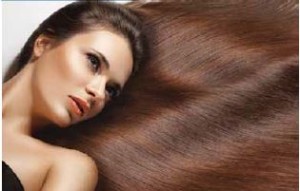The Language Of Color Part 2
 If you recall in the December issue we discussed depth and tone, and left off with underlying contributing pigment. This month I would like to illustrate how all three interact.
If you recall in the December issue we discussed depth and tone, and left off with underlying contributing pigment. This month I would like to illustrate how all three interact.
Underlying contributing pigment is what makes hair color complex. If all we had was a blank white canvas to apply the color on it would be much easier. When desired results are lighter than a person’s natural hair we must take into consideration the underlying contributing pigment. If our natural depth is a level 5 (lightest brown) then the underlying contributing pigment is orange. That means we have to keep in mind that tone will dominate our color results, when we attempt to make a natural depth of 5 lighter. Therefore when we add tone to our color formula it has to be a tone that will enhance the underlying contributing pigment or play it down. If your desire is a copper tone then this pigment can work to your benefit. If your desire is to not see any warmth then we must use a complementary color to tone down the orange.
If your recall from the December issue on Tone and Depth, orange is a combination of red and yellow, two of the three primary colors. The remaining primary color is blue. Blue is the complementary color for orange and is used to help tone down the orange. 
This is a simple illustration of how underlying contributing pigment affects hair color. Please do not use this as a bible and a cure all to do color at home. There are still factors in which the experience of a licensed cosmetologist is needed. Which is why any box color you purchase and use at home has a disclaimer that states: To be used by a professional cosmetologist only. It’s only the experience of a licensed cosmetologist that can take all of this into account while factoring in the integrity of the hair.

Leave a Reply
Want to join the discussion?Feel free to contribute!